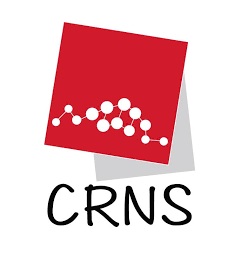For the second year in a row, the MIX.E fair (May 10 and 11 in Lyon) is showcasing the wide range of innovations aimed at optimizing energy production and consumption methods, including those developed by Orange’s research and innovation teams.
A trading platform allowing producers, consumers and prosumers to exchange green and local energy.
Supporting and Streamlining New Practices
One of these innovations aims to support the development of new energy-related practices. In recent years, the increasing popularity of solar power has led to the emergence of a group of individuals who are both consumers and producers of energy. “These people are referred to as prosumers, or even prosumactors, because they are actors in the energy transition,” explains Michel Giordani, Sustainable Territories Research Program Manager at Orange. “The solution we are developing is a trading platform that allows producers, consumers and prosumers to exchange green and local energy between domestic, service and commercial facilities. We want to connect these actors and simplify the exchange through automated matching of supply and demand based on usage, time of day and provisional production and consumption volumes.” This exchange venue relies in particular on a private, that decentralizes how it works. The technology makes the contract process simpler and more responsive for users. Each transaction is recorded and fully traceable.
Data/AI for Network Scanning
The other innovation presented at MIX.E relates to network consumption. For over a decade, Orange has been proactively committed to reducing the footprint of its telecoms “factory” via the Green ITN program, which has been extended until 2025 and includes AI and data as new performance levers. The Energy Management Information System (EMIS) project uses these technologies to monitor, control and optimize network energy consumption. “EMIS’s mission is to collect a lot of energy-related data across the network and subject it to powerful algorithmic analysis in order to detect and escalate any anomalies,” explains Taoufik En-Najjary, Data Scientist at Orange. “Irrespective of the cloud platform and measurement system, the solution enables fully automated supervision of a technical site throughout its service life. For each type of site, it is possible to locate inefficiencies compared with a typical consumption profile and to draw up recommendations for on-site optimization actions, inspired by good practices implemented on similar sites.”
Exchange Put to the Test
The exchange service is being trialed in partnership with the CRNS (Centre de Recherche en Numérique de Sfax — the Digital Research Centre of Sfax). Its use in different scenarios, between three buildings (the CRNS building and two individual households, one of which is an energy producer), has already demonstrated that the exchanges are viable and can make a difference. Unlike existing mechanisms that validate trades after the event, this solution supports dynamic, real-time balancing thanks to its predictive analysis capabilities.
Beyond that, it adds value in different ways. In economic terms, it remunerates producers fairly and provides consumers with access to local energy at a lower cost than national supplies. It is also socially and environmentally beneficial because it shortens supply chains, makes users more independent and resilient, and gets the most out of locally produced and consumed energy.
EMIS Is Growing
By integrating data and AI, EMIS is adding considerable value in operational, economic and compliance terms. Automated production of reliable indicators means the system can provide optimized monitoring and management of end-to-end network consumption. This makes it an additional tool for reducing energy consumption, CO2 emissions and associated costs.
Implemented in 2022 in Slovakia, the EMIS platform will extend to three more Orange countries in 2023. Initial deployment suggests the potential for gains of 4% in two use cases related to energy efficiency and consumption of the RAN (Radio Access Network).
Read more :
Proof of stake is a way of validating transactions carried out in a blockchain. It consumes far less energy than the traditional proof-of-work system, which requires significant computing power.
Distributed data storage and sharing technology without a central control body. Each user-member can register and exchange valuable files online.












